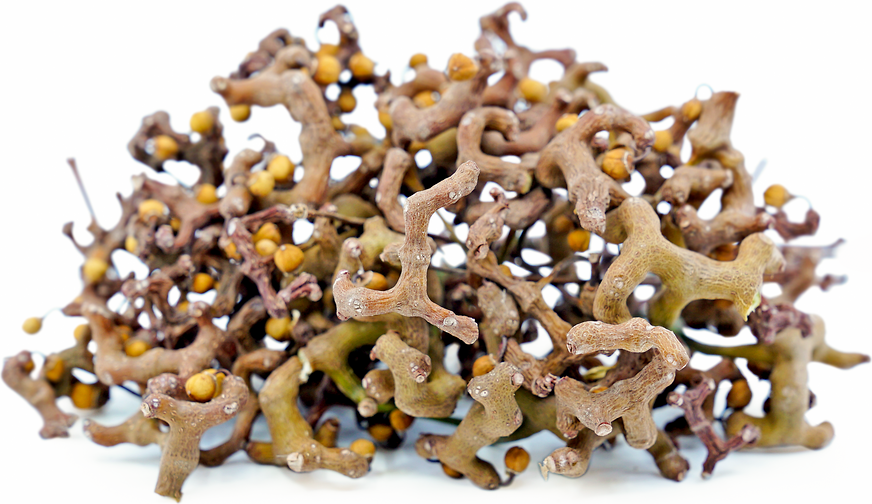


Japanese Raisin Tree
Estimated Inventory, bunch : 0
Description/Taste
The edible portion of the Japanese Raisin Tree is not the actual fruit; instead it is the stalk or ‘peduncle’ that is eaten. These small, thick stalks are a greyish-brown color and support the seed pods where the flowers once bloomed. These stalks are swollen and shorter than a typical flower stalk. The taste and texture is very similar to a dry raisin, with a hint of cinnamon.
Seasons/Availability
The stalks or “raisins” of the Japanese Raisin Tree ripens during the early fall.
Current Facts
Hovenia dulcis, or Japanese Raisin Tree is distantly related to the Jujube. This member of the Rhamnaceae (buckthorn) family is part of a small genus of seven similar Asian species that are deciduous and winter-hardy.
Applications
The edible portion of the Japanese Raisin Tree is not the actual fruit; instead it is the stalk or ‘peduncle’ that is eaten. These small, thick stalks are a greyish-brown color and support the seed pods where the flowers once bloomed. These stalks are swollen and shorter than a typical flower stalk. The taste and texture is very similar to a dry raisin, with a hint of cinnamon.
Geography/History
Native to China, Korea and Japan, Holvenia dulcis is known by many names. Japanese Raisin Tree is referred to as Chih-chu in China, Chinese Raisin Tree, and Kenpo Nashi. The peduncles of the Raisin Tree have been sold in China since pre-Confucius times. They can be found growing in the Himalayas and can resist temperatures down to minus 10°F. In the US, there are several trees that date back to the 1930s in New York, Southern California and Pennsylvania.




